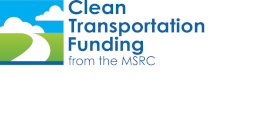The MSRC’s fall Retreat, held on September 15, reflected on the last 25 years of clean air successes made possible thanks to the MSRC’s investment of Clean Transportation Funding and looked toward the next two decades to identify ways the MSRC can best leverage its funding to meet current and future air quality challenges. Hosted by the Orange County Transportation Authority (OCTA) at its conference center, the Retreat assembled members of the MSRC, its Technical Advisory Committee (TAC) and expert guest speakers to discuss hot topics in the clean transportation arena that the MSRC might consider when crafting its Work Program for the 2016-18 fiscal years.
The Retreat kicked-off with a panel discussion on current air quality policy in California, with regional and state experts. Wayne Nastri, Executive Officer for the South Coast Air Quality Management District (SCAQMD), discussed the SCAQMD’s 2016 Air Quality Management Plan. It will cost approximately $14 billion to bring the district into attainment of federal air quality standards by 2031; thus, he said we need to move forward in a collaborative approach to best leverage public resources and incentivize private sector investments. To that end, SCAQMD is working to build a coalition at the local, state and federal levels and said that, “the MSRC’s role is tremendously vital for what we are trying to accomplish.”
Jack Kitowski, MSRC member and Chief of the Mobile Source Control Division for the California Air Resources Board (ARB), focused his comments on the role of ARB’s incentive funding programs in helping ARB achieve its goals of reducing diesel PM, NOx and GHG emissions. He remarked that, “the MSRC has the unique ability to define itself more than these programs can because these programs are defined by the Legislature and have limitations.” John Kato, Deputy Director of the Fuels and Transportation Division for the California Energy Commission (CEC), discussed the CEC’s programs designed to advance alternative and renewable transportation fuels and technologies. He concluded by saying that the MSRC can help the CEC focus the lens of the CEC’s funding since the MSRC is better positioned to know what the on-the-ground needs are of local agencies.
The day’s keynote speaker was Josh Becker, a leader in clean energy business and policy and founder of Full Circle Fund. He discussed how to improve transportation efficiency and productivity since transportation causes 60 percent of wasted energy use in California. Some of the suggestions he provided to reduce this wasted energy include: encouraging ridesharing; co-locating bus/train lines and housing; increasing the frequency of public transportation rather than expanding coverage; providing ridesharing vouchers for less frequently traveled lines; having the ability to pay for one ticket across different modes of transportation and better integrating transit schedules; using electric bikes, which can beat car usage taking into account traffic and parking for trips under 10 miles; and deploying electric transit vehicles where feasible since an electric drivetrain is 85 percent more efficient that what is on the road today. He also highlighted the important role that autonomous vehicles will play in the future in addressing transportation efficiency and said that the vision for having these vehicles truly drive down emissions is to ensure the future of transportation is Autonomous, Connected, Electric and Shared (ACES).
Expounding on the keynote speaker’s discussion of autonomous vehicles, Colin Peppard, Manager for Outreach and Strategic Relationships for the Office of Extraordinary Innovation at LA Metro, discussed the role that transit agencies can play in spurring the integration of autonomous and shared vehicles into the transportation system. Transit agencies can be a market maker by working with ride haling services like Uber and Lyft to have riders pay one time and use these services to travel to highly-used transit stops instead of driving the whole route. Additionally, when transit agencies say they want to move toward electric or alternative fuel technology (whether this is by a local agency decision or direction by a state regulation), manufacturers will invest in research and development to make the technology happen. He predicts that by 2035, public transit will use mostly autonomous vehicles.
Following the guest speakers, a presentation on this summer’s Work Program workshops held throughout the MSRC’s four-county jurisdictions was made providing highlights of the diverse workshop comments that were provided to help guide the MSRC’s next Work Program. The day’s last speaker was Ray Gorski, the MSRC’s Technical Advisor, who provided an overview of the important programs the MSRC has funded over the last 25 years, observations on their cost effectiveness, and recommendations for some of the programs that the MSRC should consider in the future.
The Retreat was capped off by a field trip to the Anaheim Regional Transportation Intermodal Center (ARTIC) on a new zero emission, fuel cell electric bus recently acquired by OCTA. Workshop participants received a behind-the-scenes tour of the facility, which provides a one-stop-shop for rail, bus, bicycling and other commuter services for the region. The environmentally friendly features incorporated into the structure’s design earned it the highest rating from the U.S. Green Building Council - LEED Platinum - certifying the building as highly resource efficient.
The MSRC and TAC members will use the ideas discussed at the Retreat to inform the Work Program development process. The MSRC plans to have new solicitations available by the beginning of 2017.
